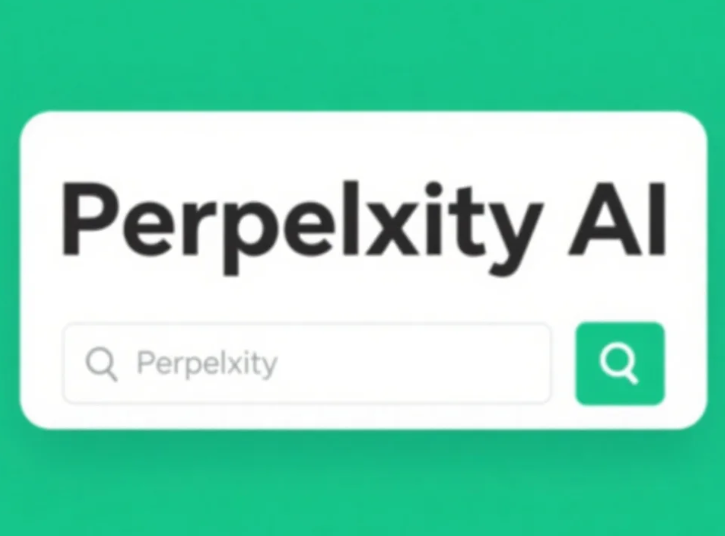When it comes to online research, the debate between Perplexity AI search and Google is getting more attention than ever. Both platforms help users find information quickly, but they operate in very different ways. Perplexity AI offers conversational answers powered by advanced artificial intelligence, while Google provides traditional search engine results with decades of data indexing. This article explores the strengths, weaknesses, and ideal use cases of each, helping you decide which platform fits your research or productivity goals.

What is Perplexity AI Search?
Perplexity AI search is an AI-driven platform that delivers concise, context-aware answers instead of just links. It uses large language models to interpret questions, summarize content, and provide real-time references. Unlike traditional search engines, it mimics human-like conversations, allowing users to refine queries naturally. Students, researchers, and professionals increasingly adopt it to save time when handling complex or multi-layered topics.
How Google Search Works
Google remains the most widely used search engine, indexing billions of web pages daily. Its algorithm ranks results using hundreds of factors like relevance, backlinks, and page authority. Unlike Perplexity AI, Google does not directly generate answers. Instead, it offers ranked lists of resources for users to explore. This traditional approach benefits people who prefer to review multiple perspectives, filter by content type, or verify information directly from original sources.
Quick Fact: Google processes over 8.5 billion searches per day, while Perplexity AI handles fewer requests but focuses on deeper, high-quality responses.
Perplexity AI Search vs Google: Core Differences
The fundamental difference between the two lies in their approach to information retrieval. Google emphasizes breadth, while Perplexity AI emphasizes depth. Let’s break it down.
? Speed
Google is unmatched in speed, providing results in milliseconds. Perplexity AI is slightly slower, as it processes natural language queries in real time.
?? Accuracy
Perplexity AI search often delivers more direct answers with citations, while Google requires the user to check multiple links for accuracy.
?? Context
Perplexity excels at understanding context and follow-up questions. Google works best for broad queries with endless possible results.
Strengths of Perplexity AI Search
Provides conversational and human-like answers.
Includes citations for verification.
Ideal for deep research and summarization tasks.
Reduces time spent opening multiple tabs.
Strengths of Google Search
Vast index covering nearly all websites globally.
Fast results with customizable filters (images, news, videos).
Strong integration with other services like Gmail, Maps, and YouTube.
Better for shopping, browsing, and general web discovery.
Use Cases: When to Choose Perplexity AI Search
Perplexity AI search is best for situations requiring synthesized information. For example:
?? Writing academic papers with summarized references
?? Preparing quick reports or research briefs
?? Learning complex subjects in a simplified way
?? Fact-checking information with linked sources
Use Cases: When to Choose Google Search
Google is more practical for broad and diverse needs:
?? Shopping and product comparisons
?? Discovering trending news stories
?? Accessing niche community discussions (forums, Reddit)
?? Exploring multimedia content like videos and images
Limitations of Perplexity AI Search
While powerful, Perplexity AI has some drawbacks:
Smaller knowledge base compared to Google’s vast index.
Can occasionally generate inaccurate summaries if sources are weak.
May struggle with real-time breaking news compared to Google.
Limitations of Google Search
Despite its dominance, Google search also has weaknesses:
Information overload from thousands of links.
Requires manual effort to compare and summarize content.
Advertisements can clutter search results.
Direct Comparison Table
| Feature | Perplexity AI Search | |
|---|---|---|
| Answer Style | Conversational with citations | List of ranked links |
| Best For | Research, summaries, reports | Shopping, news, browsing |
| Learning Curve | Minimal, intuitive | Moderate, requires filtering |
Final Verdict: Which One Works Better?
The choice between Perplexity AI search and Google depends on your goals. If you need fast answers with context and verified references, Perplexity AI is the better choice. If you prefer exploring multiple resources, shopping, or consuming diverse content, Google is unmatched. Many professionals find value in using both together: starting with Perplexity AI for summaries, then turning to Google for further exploration.
Key Takeaways
? Perplexity AI search offers conversational, reference-based answers.
? Google provides speed, breadth, and global indexing power.
? Use Perplexity AI for research and summarization tasks.
? Use Google for shopping, news, and multimedia exploration.
? The best strategy is often combining both tools for efficiency.
Learn more about Perplexity AI
